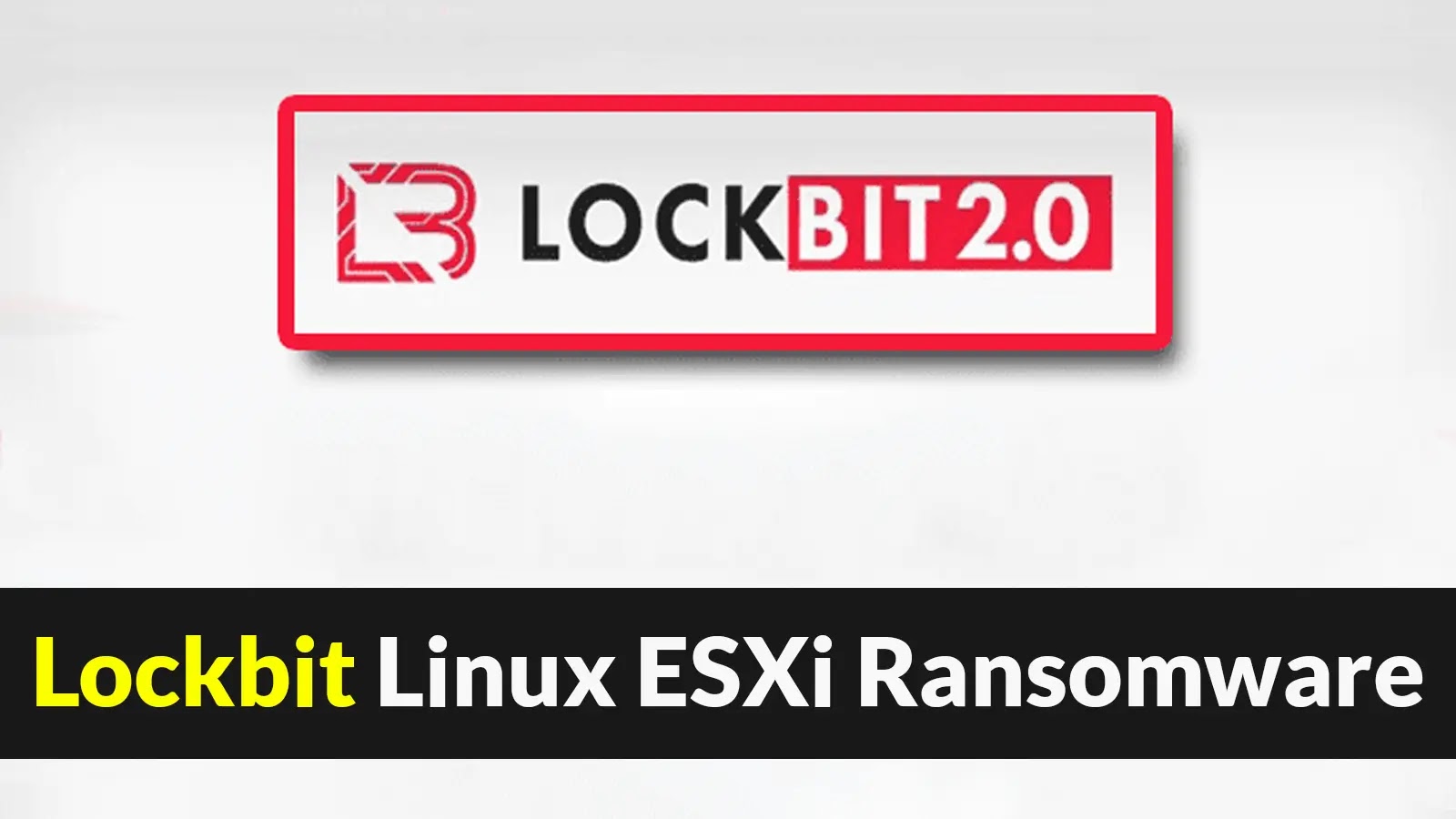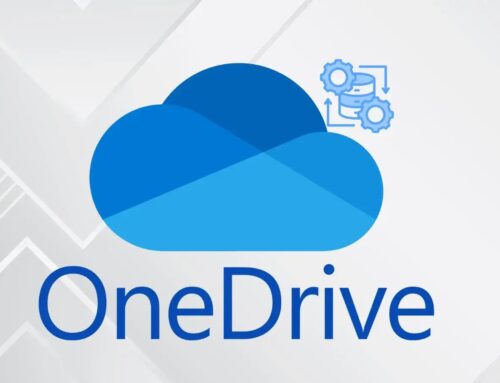
Lockbit Linux ESXi Ransomware Variant Evasion Techniques, File Encryption Process Uncovered
Navigating the Evolved Threat: LockBit Linux ESXi Ransomware and Its Evasion Tactics
The landscape of cyber threats is perpetually shifting, and enterprises running virtualized infrastructures face an increasingly sophisticated adversary. A prime example of this evolution is the emergence of the LockBit Linux ESXi ransomware variant, a highly targeted and potent threat specifically engineered to compromise and encrypt VMware ESXi environments. This variant represents a significant escalation in ransomware capabilities, moving beyond traditional Windows-based targets to strike at the very heart of modern data centers and cloud computing foundations. Understanding its evasion techniques and encryption processes is not just academic; it’s critical for robust defense.
The LockBit Linux ESXi Threat: A Deep Dive
Unlike its predecessors, the LockBit Linux ESXi variant is custom-built to exploit vulnerabilities within VMware ESXi, the hypervisor that underpins countless virtual machines. This focus allows it to achieve widespread disruption by encrypting entire virtual disks and their associated files, effectively crippling an organization’s operational capabilities. Its sophistication lies in its ability to operate within the Linux environment, which is often perceived as more secure, showcasing ransomware developers’ adaptation to diverse operating systems and infrastructure types.
Evasion Techniques Employed by LockBit Linux ESXi
The LockBit Linux ESXi ransomware employs shrewd evasion techniques designed to bypass conventional security measures and maximize its destructive potential. While specific, publicly detailed evasion methods for this variant are still being uncovered, general tactics for Linux-based ransomware and the nature of ESXi environments suggest the following:
- Targeted Exploitation: Instead of broad scanning, this variant likely leverages known or zero-day vulnerabilities in ESXi itself or associated management tools to gain initial access. While no specific CVEs have been publicly linked solely to its initial access vector for this particular variant, maintaining up-to-date ESXi patches is paramount. Refer to the official VMware security advisories for patches related to ESXi vulnerabilities, such as those listed and tracked in the CVE-2021-39144 (vCenter Server APNIC vulnerability, though not directly LockBit-related, illustrates the critical nature of patching management interfaces) or CVE-2023-20867 (vCenter Server local privilege escalation).
- Stealthy Lateral Movement: Once inside, it seeks to move laterally within the ESXi host or across multiple hosts, aiming for administrative privileges. This might involve exploiting weak credentials, misconfigurations, or unpatched vulnerabilities in vCenter Server.
- Resource Manipulation: Before encryption, the ransomware may attempt to disable or terminate services and processes associated with backups, snapshots, or security monitoring tools running on the ESXi host to prevent detection and recovery.
- Encrypted Communication: Command and control (C2) communications often employ encrypted channels to avoid detection by network monitoring tools.
- Absence of Common Windows Artifacts: Being a Linux binary, it leaves no traces typical of Windows malware, making Endpoint Detection and Response (EDR) solutions primarily focused on Windows less effective without specialized Linux monitoring.
The File Encryption Process Uncovered
The core destructive capability of the LockBit Linux ESXi ransomware lies in its efficient and robust file encryption process. Upon successful infiltration and privilege escalation, the ransomware identifies files associated with virtual machines, primarily .vmdk (virtual disk) files and potentially configuration files like .vmx.
- Targeted File Types: Its primary targets are the large
.vmdkfiles, which contain the operating systems and data of virtual machines. Its design likely optimizes the encryption of these large files for speed and efficiency. - Encryption Algorithm: While specific details for this variant might be proprietary to threat actors, LockBit ransomware families typically leverage strong, industry-standard symmetrical encryption algorithms such as AES (Advanced Encryption Standard).
- Key Management: Each file, or block of a large file, is encrypted with a unique session key, which is then encrypted using an asymmetrical algorithm (e.g., RSA) with the attacker’s public key. This encrypted session key is appended to the encrypted file or stored in a ransom note. This hybrid encryption ensures that only the attacker, possessing the corresponding private key, can decrypt the data.
- File Renaming and Ransom Note: Encrypted files are often renamed with a specific extension (e.g.,
.lockbitor similar), and a ransom note (e.g.,README.txt) is dropped in affected directories, providing instructions for victims to pay the ransom, usually in cryptocurrency.
Remediation Actions and Proactive Defense
Defending against the LockBit Linux ESXi ransomware requires a multi-layered and proactive strategy:
- Patch Management: Implement a rigorous patch management program for all VMware ESXi hosts, vCenter Servers, and virtual machines. Stay current with VMware security advisories and apply patches promptly.
- Strong Authentication: Enforce strong, complex passwords and multi-factor authentication (MFA) for all administrative interfaces, including ESXi, vCenter, and any associated management tools.
- Network Segmentation: Isolate ESXi management networks from other network segments. Implement strict firewall rules to limit access to ESXi hosts and vCenter to only necessary administrative workstations.
- Least Privilege: Adhere to the principle of least privilege for all user accounts and service accounts accessing the virtualized infrastructure.
- Regular Backups: Implement a robust, immutable backup strategy for all virtual machines and critical configurations. Store backups offline or on segregated networks to prevent them from being encrypted. Regularly test backup and recovery procedures.
- Security Tooling: Deploy specialized security tools capable of monitoring and detecting anomalies within Linux environments and ESXi hosts.
- Endpoint Detection & Response (EDR): Utilize EDR solutions that support Linux and ESXi environments to detect suspicious activities, process executions, and file modifications.
- Incident Response Plan: Develop and regularly test a comprehensive incident response plan specifically addressing ransomware attacks on virtualized infrastructure.
Security Tools for Mitigation and Detection
Leveraging the right tools is essential for strengthening your defense posture against sophisticated threats like LockBit Linux ESXi ransomware.
| Tool Name | Purpose | Link |
|---|---|---|
| VMware Security Advisories | Official source for ESXi patches and vulnerability information. | https://www.vmware.com/security/advisories.html |
| Veeam Backup & Replication | Robust, immutable backup and recovery solution for VMware ESXi. | https://www.veeam.com/ |
| Carbon Black Cloud (VMware) | Endpoint Detection and Response (EDR) for virtual environments. | https://www.carbonblack.com/ |
| Nessus (Tenable) | Vulnerability scanning for ESXi hosts and virtual machines. | https://www.tenable.com/products/nessus |
| CrowdStrike Falcon Insight XDR | Extended Detection and Response for Linux and virtualized environments. | https://www.crowdstrike.com/products/endpoint-security/falcon-insight-xdr/ |
Conclusion: Fortifying Virtualized Infrastructures
The LockBit Linux ESXi ransomware variant underscores a critical shift in adversary targeting: moving from endpoints to core infrastructure. Its ability to evade traditional defenses and rapidly encrypt entire virtual environments demands a heightened level of awareness and an adaptive security posture. By diligently applying patches, enforcing stringent access controls, implementing robust backup strategies, and utilizing specialized security tooling, organizations can significantly reduce their attack surface and bolster resilience against this evolving threat. Proactive defense and a well-rehearsed incident response plan are no longer optional, but foundational elements to safeguarding modern data centers against such sophisticated ransomware.





